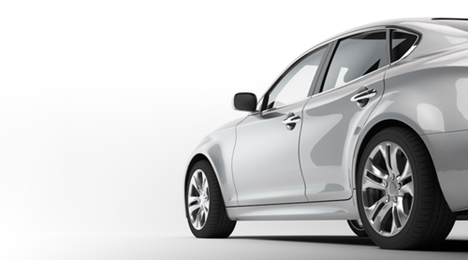Since Credit Acceptance Corp., is planning to purchase up to 637,420 shares of its outstanding common stock later this month, the company offered some operating results for the two months of the year as the industry navigated through the peak of tax season.
Credit Acceptance reported this week that the company enjoyed an 18.1-percent jump in originations above what the finance company posted in January and February of last year. The company originated 39,423 contracts, up from 33,367 deals during the same span a year ago.
Officials added the dollar volume of the contracts they book in January and February also spiked 20.1 percent.
“We believe a delay in federal income tax refunds in 2013 contributed to the decline in unit and dollar volumes during the first quarter of 2013 and may have also contributed to the increase in unit and dollar volumes during the two months ended Feb. 28,” officials said.
The company’s active dealer base also jumped during the first two months of this year. After January and February of last year, Credit Acceptance had 3,822 active dealers in its network. Following the first two months of this year, that amount jumped 17.2 percent to 4,480.
Of the Top 20 finance companies in the used-vehicle market, only eight gained market share year-over-year as of the close of the fourth quarter.
And according to Experian Automotive, many of the operations that lost ground in Q4 saw their market shares soften by double digits.
Analysts indicated Wells Fargo continues to be the market share leader in used-vehicle financing, holding 6.83 percent at the end of 2013. That’s up 6.3 percent from Q4 of 2012.
Experian pointed out the next three market share holders made year-over-year gains in Q4, including:
— Capital One: 3.91 percent, up 5.3 percent
— Ally Financial: 3.8 percent, up 3.8 percent
— Chase: 3.79 percent, up 5.2 percent.
Meanwhile, the remainder of the Top 20 used-vehicle financing market holders consisted of companies that made some significant gains or sustained some noteworthy declines. Experian’s Q4 data ended up this way:
— Toyota: 2.24 percent, down 9.7 percent
— Santander: 2.20 percent, down 22.4 percent
— CarMax: 1.54 percent, up 6.6 percent
— Credit Acceptance: 1.53 percent, up 3.5 percent
— Bank of America: 1.37 percent, down 24.1 percent
— Fifth Third Bank: 1.23 percent, down 19.5 percent
— USAA: 0.99 percent, up 2.3 percent
— Huntington Bank: 0.98 percent, down 2.6 percent
— Chrysler Capital: 0.98 percent (no comparison)
— BMW Bank: 0.98 percent, down 0.6 percent
— TD Auto Finance: 0.94 percent, down 40.9 percent
— Westlake: 0.93 percent, down 5.4 percent
— SunTrust Bank: 0.92 percent, down 1.5 percent
— Navy FCU: 0.85 percent, up 8.2 percent
— AmeriCredit: 0.82 percent, down 13.9 percent
— Ford: 0.78 percent, down 17.2 percent
On the new-vehicle side, Experian determined only seven of the top 20 market share holders posted year-over-year gains in Q4. But those companies that did enjoyed jumps of at least 8.8 percent.
The Top 20 new-vehicle market share holders as of the fourth quarter are:
— Toyota: 8.34 percent, down 7.6 percent
— Ford: 8.18 percent, up 9.9 percent
— Honda: 7.99 percent, up 13.1 percent
— Chase: 6.38 percent, down 3.4 percent
— Nissan/Infiniti: 6.31 percent, up 15.6 percent
— Ally Financial: 5.85 percent, down 28.4 percent
— Capital One: 4.40 percent, up 20.0 percent
— Wells Fargo: 4.04 percent, up 17.5 percent
— Chrysler Capital: 2.81 percent (no comparison)
— Hyundai: 2.52 percent, down 11.1 percent
— US Bank: 1.91 percent, down 9.6 percent
—World Omni: 1.89 percent, up 8.8 percent
— Bank of America: 1.86 percent, down 48.9 percent
— TD Auto Finance: 1.84 percent, down 20.8 percent
— PNC Bank: 1.71 percent, up 34.5 percent
— Fifth Third Bank: 1.41 percent, down 19.9 percent
— BMW Bank: 1.39 percent, down 10.7 percent
— RBS Citizens: 1.36 percent, down 16.3 percent
— SunTrust: 1.27 percent, down 19.5 percent
— VW Credit: 1.26 percent, down 23.5 percent
Will buyers flock to showrooms to buy new vehicles this year? Market optimists seem to think so. And most who attended the North American International Auto Show are utterly ebullient. But those who believe the glass is half empty say trends are heading in the opposite direction.
Several key factors are pushing sales up, including:
Rising pent-up demand
While 15.5 million new vehicles were sold in 2013, the gap between the number of new cars that should have been sold and those actually sold is huge — about 26 million vehicles as of year-end.
Scrappage rates up in 2014
Vehicles cycle through owner after owner until they're ultimately scrapped. The ratio of cars scrapped to the total cars on the road — the scrappage rate — measures how many cars are removed from circulation in a given year. Many new vehicles bought during the auto boom years of 1999-2007 are entering the prime period for scrappage, pushing up new vehicle sales in the coming years.
Strong economy, low interest rates and new technology
Most economists believe consumer confidence will rise, interest rates will remain at record lows (around 4 percent for credit worthy consumers) and new technology will draw non-luxury buyers into showrooms.
The economy is the driving force. Here are factors that could potentially push sales down:
Auto density dropping
Auto density — or the number of vehicles per driver or household — has been sharply declining since 2006. Even a 1 percent change in this density can equate to as many as one million new vehicle sales annually.
Used vehicles more attractive
The number of new vehicles purchased has been steadily declining since 1976. Rising gas prices have reduced miles driven, and the quality of vehicles has been rising steadily, making them more reliable. These factors have prompted consumers to keep their existing vehicles or purchase a low-mileage used one.
Desire for vehicles waning
Public transportation and ride share services like Zipcar are more cost effective for an increasing numbers of city dwellers. Many millennials, pummeled by the Great Recession and student loan debt, are thinking twice about buying a new vehicle. Similarly, retiring Baby Boomers no longer feel the need to buy a new vehicle every four years.
Final observations on auto market financing
New car and light truck sales for 2014 are estimated to hover around 16.4 million. The number of vehicles financed will likely rise, and the total cost of financing will influence buying decisions. Auto lenders, particularly non-bank lenders, will explore new ways for buyers with less-than-perfect credit scores to obtain credit. Auto loan securitizations among Wall Street investors are on an uptick, which will increase access to financing and raise demand for detailed consumer credit data.
For more information on Equifax Automotive solutions, visit www.equifax.com/automotive.
Dennis Carlson has spent his life analyzing data as a vehicle to better understand the world. His first science fair project was predicting wins in baseball using a calculator and team statistics from the Baseball Encyclopedia. After graduating from the University of Florida, the life-long ‘data junkie’ studied graduate statistics at Cornell University. A 14-year financial services veteran, Carlson leveraged the power of data, analytics, and predictive modeling to transform how financial institutions and merchants relate to their customers for American Express and First Data before joining Equifax in 2012. He now serves as the deputy chief economist where he continues to tap his unique combination of data science and industry acumen to provide analytical insights to advance the business of both Equifax and clients.
The staff at Black Blook Lender Solutions envisions underwriting personnel at finance companies watching two computer screens when evaluating an application that arrives from a dealership in their network. One screen shows the applicant’s complete credit history. The other monitor shows the depreciation history and projections for the vehicle expected to be attached to that contract.
“If it’s not happening, it should be,” said Jared Kalfus, the vice president of data licensing at Black Book.
“Data is really becoming paramount and becoming more integrated into that decision-making process,” Kalfus continued. “If you look at it from different angles and benefits you can receive, the data should be analyzed from many different views. You can leverage that data to spot opportunities that might not have been so obvious and new opportunities that might have been easily identified.
“The analytics really help those lenders find new profit centers with vehicles they might not have historically looked at or shied away from,” he went on to say.
Black Book reached out to SubPrime Auto Finance News to continue the discussion generally being dubbed, “the new normal.” It’s a theme that dominated conversations earlier this year when the American Financial Services Association conducted its annual Vehicle Finance Conference. Recent data from J.D. Power and Experian Automotive indicates finance companies are booking more loans at 72 months — maybe even longer — and loan-to-value ratios are climbing.
Black Book editorial director Ricky Beggs believes these trends go back even further than when the calendar flipped to 2014.
“In the last two years during a lot of conversations, similar concerns that pop up are the length of these loans and their loan to value ratios that are out there,” Beggs said. “And because the vehicles are being collateralized a little bit higher, that puts even more questions out there. Then you add in the competition between the lenders. They’re getting pressed and pushed to make more loans to make more profit and get that loan on the books.”
So how do finance companies navigate this ‘new normal’ that doesn’t appear to be going away any time soon? Black Book insisted its Collateral Insight Engine can be a tool to leverage. Product manager Brett Collett ran through some examples with SubPrime Auto Finance News this week to give finance companies some hard figures to consider.
Collett explained a finance company might sustain a $500 loss if a $25,000 loan with a 60-month term and a 4-percent APR ends up in a recovery situation after two years. That loss can balloon up to $3,500 if the term originated was at 84 months but went into recovery at the same junction.
Collett insisted that risk can be mitigated if finance companies can get a better grasp on the collateral value retention projections before even delving into terms that long; again that “new normal” financing companies are encountering.
“That’s a huge spread and risk that those lenders are taking with this pricing competition, and that’s assuming a 15-percent depreciation rate,” Collett said. “But as we all know each vehicle depreciates differently. Understanding the past trends and future projections will determine which side of the fence you might land. Are you going to be in a better position because you’ve got better collateral that you can put longer terms on? Or are you going to be in a worse position because you took riskier collateral with those longer terms?
“Lenders all have proprietary credit models but they rely on a lot of the same data,” he continued. “Having collateral inside that mix can mean the difference between a profitable decision in this ultra-competitive environment versus non-profitable decisions.”
According to Black Book data, used vehicles from the model years 2008 through 2012 depreciated by 1.1 percent overall in February, showing stronger seasonal retention compared to the 1.9 percent rate decline in January.
Beggs indicated average pre-recession depreciation is historically between 1 percent and 2 percent monthly, and Black Book expects overall 2014 depreciation of 13.5 percent.
Beggs also emphasized this time of year is when finance companies should pay extra attention to vehicle depreciation trends. He offered an example of what’s been happening recently with entry-level models, both compacts and midsize cars.
“Overall those are not segments that we feel like are going to be very strong segments retention wise for the overall year,” Beggs said. Some of the reasons are the volume of those vehicles in the marketplace, more players in those segments because of (Corporate Average Fuel Economy) requirements, and the level of gas prices we have right now and what are expected for the rest of the year being stable in relation to what we saw in 2008 and 2009.
“But if you look at the last three weeks, those segments have actually done the best in retention or lack of depreciation,” he continued. “That’s being driven primarily because of this time of the year, the tax season market. These are the lowest priced average cars out there so they fit well in that buy-here, pay-here and subprime market that gets a lot of attention in tax season.
“The fact that you’ve got a difference right now in what these segments should be overall for the year becomes important to see and that’s what Collateral Insight Engine looks at from the big picture,” Beggs went on to say.
Beggs closed with one final point about why finance companies need to monitor vehicle deprecation.
“If you look at dealer side, they have a good grasp of the cars based on their experience of what they’re buying and selling,” Beggs said. “When you look at it from the lender side, they don’t know the car itself but they know lending. They need to be able to depend on analytics to complement their lending experience to determine what is the good risk.”
Here is the complete breakdown of Black Book recorded February value changes of used vehicles for model years 2008 through 2012:
| Bodystyle |
3/1/13 |
2/1/14 |
Sequential Change |
3/1/14 |
Annual Change |
| All Vehicles |
$21,051 |
$18,342 |
-1.1% |
$18,137 |
-13.8% |
| Domestic Car |
$14,389 |
$12,316 |
-0.6% |
$12,244 |
-14.9% |
| Domestic Truck |
$19,233 |
$17,000 |
-0.9% |
$16,845 |
-12.4% |
| Import Car |
$22,633 |
$19,403 |
-1.1% |
$19,191 |
-15.2% |
| Import Truck |
$23,423 |
$20,759 |
-1.5% |
$20,452 |
-12.7% |
| Minivan Cargo |
$10,955 |
$9,386 |
-3.4% |
$9,068 |
-17.2% |
| Full-size CUV |
$25,240 |
$21,544 |
-2.0% |
$21,105 |
-16.4% |
| Midsize CUV |
$21,663 |
$18,815 |
-2.0% |
$18,446 |
-14.8% |
| Compact CUV |
$15,220 |
$12,981 |
-1.5% |
$12,784 |
-16.0% |
| Midsize Pickup |
$18,304 |
$16,889 |
-1.5% |
$16,638 |
-9.1% |
| Midsize SUV |
$20,546 |
$18,005 |
-1.3% |
$17,765 |
-13.5% |
| Entry Level Car |
$8,881 |
$7,399 |
-1.3% |
$7,303 |
-17.8% |
| Prestige Luxury Car |
$41,472 |
$34,796 |
-1.3% |
$34,351 |
-17.2% |
| Luxury SUV |
$38,775 |
$34,437 |
-1.2% |
$34,028 |
-12.2% |
| Premium Sporty Car |
$53,286 |
$46,797 |
-1.2% |
$46,248 |
-13.2% |
| Near Luxury Car |
$21,007 |
$18,189 |
-1.2% |
$17,979 |
-14.4% |
| Compact Pickup |
$16,224 |
$15,215 |
-1.1% |
$15,047 |
-7.3% |
| Upper Midsize Car |
$12,918 |
$11,023 |
-1.1% |
$10,902 |
-15.6% |
| Luxury Level Car |
$23,982 |
$20,658 |
-1.0% |
$20,445 |
-14.7% |
| Sporty Car |
$21,957 |
$18,879 |
-0.9% |
$18,710 |
-14.8% |
| Compact Car |
$10,752 |
$9,130 |
-0.9% |
$9,051 |
-15.8% |
| Compact SUV |
$17,023 |
$15,963 |
-0.8% |
$15,828 |
-7.0% |
| Minivan Passenger |
$14,772 |
$12,745 |
-0.8% |
$12,638 |
-14.4% |
| Full-size Pickup |
$24,702 |
$23,165 |
-0.7% |
$23,010 |
-6.9% |
| Full-size Cargo Van |
$14,116 |
$12,384 |
-0.5% |
$12,327 |
-12.7% |
| Entry Midsize Car |
$12,788 |
$10,611 |
-0.5% |
$10,563 |
-17.4% |
| Full-size SUV |
$22,998 |
$20,430 |
-0.4% |
$20,342 |
-11.6% |
| Full-size Car |
$15,265 |
$12,887 |
-0.4% |
$12,841 |
-15.9% |
| Full-size Pass. Vans |
$14,711 |
$12,804 |
-0.2% |
$12,774 |
-13.2% |
Experian Automotive’s most recent data showed how much more risk captive lenders are taking in regard to loan-to-value (LTV) levels when booking contracts for used models.
Experian indicated LTVs for captives that financed used vehicles in Q4 jumped by 306 basis points to an average of 128.6 percent. That year-over-year increase was far more than what Experian noticed for credit unions (up 136 basis points to 135.8 percent) and finance companies (up 115 basis points to 152.4 percent).
Overall, analysts found that LTVs for used-vehicle financing rose 113 points to 133.8 percent.
On the new-car side, Experian determined credit unions pushed their LTVs up the most during the fourth quarter, increasing them by 212 basis points to 115.3 percent. That basis-point amount recorded by credit unions nearly quadrupled the market average, which moved up 56 basis points year-over-year to 110.4 percent.
Looking at the LTV data by consumer credit category, Experian’s data showed the overall aggression in the market to make deals with buyers with damaged credit histories and more negative equity.
For deep subprime — consumers who Experian said have credit scores below 550 — LTVs soared the most year-over-year for both new- and used-vehicle financing. For new, the increase came in at 301 basis points to 126.0 percent, and for used, the jump registered at 220 basis points to 149.2 percent.
The other credit categories outside of prime posted similar increases during the fourth quarter according to Experian, including:
—Subprime new: up 234 basis points to 125.5 percent
—Subprime used: up 164 basis points to 142.3 percent
—Non-prime new: 143 basis points to 122.2 percent
—Non-prime used: up 110 basis points to 136.8 percent
The LTV data dissected by Experian conveyed a similar trend shared in the most recent dealer survey conducted by KeyBanc Capital Markets.
KeyBanc reported that financing availability remains strong as majority of the dealer respondents — 56 percent to be exact — indicated banks and finance companies were becoming more aggressive in January and the remaining 44 percent indicated no change from a year earlier.
The survey results also showed financing for subprime borrowers continued on a positive trend as 60 percent of the dealer respondents indicated favorable conditions remained unchanged and the remaining 40 percent indicated subprime financing continued to loosen in the month of January.
More than a dozen trends arose when CarFinance.com examined its full-year financing data to find out the Top 10 new- and used-vehicle choices for its below-prime vehicle buyers in 2013.
On the new-model side, CarFinance.com discovered the list of most purchased vehicles diverges completely from the overall Top 10 selling vehicles in the U.S.
The site indicated that Kia, a brand known for affordable, fuel-efficient vehicles, dominated its below-prime new-vehicle list, offering the automaker what analysts contend is “an important opportunity to develop loyalty among this customer base as it moves upstream.”
CarFinance.com mentioned Chevrolet performed well in both new and used below-prime categories.
Overall, the site pointed out below-prime buyers continue to purchase new compacts, used trucks and affordable vehicles that may not have a flashy pedigree, but offer great value.
“The CarFinance.com Top 10 Lists offer a snapshot of the vehicle preferences of consumers credited with helping drive U.S. auto sales growth,” CarFinance.com chief executive officer Jim Landy said.
“The automaker brands that show up on these lists should take note: today's below-prime car buyer — who is already re-building credit with a car purchase — could be your brand-loyal prime customer of tomorrow,” Landy continued.
The Top 10 New Vehicles Purchased by Below-Prime Buyers
1. Dodge Avenger and Kia Optima (Tied)
2. Kia Forte
3. Ford Focus
4. Kia Soul
5. Dodge Journey
6. Chevrolet Malibu
7. Chevrolet Cruze
8. Chrysler 200
9. Kia Rio
10. Nissan Sentra
Among the trends, analysts found when compiling the new-model list:
• Compact cars that offer good fuel economy and value in their class heavily dominated the list.
• With four models on the list, Kia “definitely is hitting a mark with this segment. Its range of product is resonating with this buyer,” analysts said.
• More domestics (6) made the list than imports with Kia and Nissan as the only import brands in the Top 10.
• No SUVs or trucks made the list, although the Kia Soul offers an 'SUV-like' vehicle without the expense of actually being one. And the Dodge Journey with a three-row seat option offers family-friendly space, more affordably than the average mini-van.
• Below-prime buyers snapped up the great deals offered by dealerships as they moved the 2013 Malibu off their lots to make way for a design update.
• The most popular vehicle with these consumers, the Dodge Avenger, is an often overlooked midsize sedan that performs well at a competitive price
• The Chrysler 200 is a natural for the list given that it is essentially the same vehicle as the Dodge Avenger: different design but similar incentives.
• Ford Focus is “no surprise” in third place, according to the site, which added, “It’s a well-designed, competitively priced compact, available as a sedan or hatchback, with appeal as a great ride even at the most basic and affordable trim level.”
• The popularity of the Optima, Soul, Rio and Forte, which offer 10-year/100,000-mile warranties, indicate that not only are fuel economy and pricing probably key to this buyer, but so are longer manufacturer warranties
Top 10 Used Vehicles Purchased by Below-Prime Buyers
1. Nissan Altima
2. Chevrolet Silverado 1500
3. Ram 1500
4. Ford F-150
5. Chevrolet Impala
6. Dodge Charger
7. Toyota Camry
8. Chevrolet Malibu
9. Honda Accord
10. Ford Fusion
Among the trends, analysts found when compiling the used-model list:
• The used story is one of trucks and domestic sedans and import sedans that hold their value.
• Domestics (led by Chevrolet) overwhelmed imports with only three import models, Altima, Camry (top-selling sedan in the U.S) and the Accord, cracking the Top 10.
• Unlike the new-vehicle list, which lacks trucks or SUVs, it’s no surprise to see three trucks near the top here, given their overall popularity in the market, their longevity and the value they offer as pre-owned vehicles.
• Chevrolet Impala and Dodge Charger show up as strong choices for consumers looking for larger cars at more affordable prices.
Finance companies still aren’t shying away from giving contracts to subprime consumers based on the fourth-quarter information from Experian Automotive.
According to its latest State of the Automotive Finance Market report, Experian highlighted today that financing became easier to obtain in Q4 2013, as the average credit scores for both new leases and loans decreased from the previous year. The average credit score for a new-vehicle lease dropped 16 points to 719 in Q4 2013 from 735 during the previous year.
The average credit score for new vehicle loans, however, saw a slightly smaller decrease year-over-year, dropping from 724 in Q4 2012 to 715 in Q4 2013.
Analysts determined market share for nonprime, subprime and deep subprime new vehicle loans also rose slightly in Q4 2013 to 34.1 percent from 32.8 percent in Q4 2012.
For used vehicles, Experian noted nonprime, subprime and deep subprime loans accounted for 62.8 percent of all loans, down 1.6 percent from 63.8 percent in Q4 2012.
“We are still seeing remarkable stability in the automotive finance industry, even as lenders continue to ease slightly on credit standards to provide loans and leases,” said Melinda Zabritski, senior director of automotive credit for Experian Automotive. “What makes this good news for consumers is that the more credit-challenged car shoppers who need a vehicle may find that they have more financing options to choose from and can more easily shop around for the best rates and terms.”
As Zabritski referenced, more consumers are choosing to lease vehicles, bringing the share of new vehicles financed with a lease to its highest level since the company began publically reporting the data in 2006.
Experian found that 28.4 percent of all new vehicles financed were leases in Q4 2013, up from 24.8 percent the previous year.
“Leasing continues to grow in popularity among car shoppers, especially those hoping to stay within a strict monthly budget,” Zabritski said. “Our analysis this quarter showed that the average monthly lease payment was $51 lower than the average loan payment, which can make a big difference to consumers trying to stretch their dollar.”
To be exact, Experian discovered the average monthly payment for a new-model loan came in at $471 in Q4 while the monthly commitment to a new-vehicle lease came in at $420.
Other findings from the report showed the average amount financed for a new vehicle was $27,430 in Q4 2013, up from $26,691 in Q4 2012. This marked the highest average loan amount for a new vehicle since 2008 and the first time the amount has exceeded $27,000.
Additionally, the average loan amount for a used vehicle during the quarter was $17,974, up $345 from the previous year, which was also a record-high since 2008.
In other trends:
• Average monthly loan payments for used vehicles were up from $348 in Q4 2012 to $352 in Q4 2013.
• New-vehicle interest rates were up to 4.37 percent in Q4 2013 from 4.36 percent in Q4 2012.
• Used-vehicle interest rates were up to 8.71 percent in Q4 2013 from 8.48 percent in Q4 2012.
• The average credit score for a used vehicle loan rose from 644 in Q4 2012 to 646 in Q4 2013.
As the finance company closed the year with a 16.2-percent jump in active dealers, Credit Acceptance Corp. watched its unit and dollar volumes rise by double figures during the fourth quarter as well, to leave the operation with a healthy gain in consolidated net income for 2013.
Credit Acceptance reported unit and dollar volumes increased 12.6 percent and 11.3 percent as the company originated 46,677 contracts during Q4. For the year, the company originated 202,250 loans, up from 190,023 in 2012.
The company's active dealer level finished 2013 at 6,394 stores, up from 5,319 dealerships a year earlier.
"There's a wide variety of dealerships that would work on our program that works at — very small and independent dealers and some of the largest franchise dealers in the country. We're not targeting one group or the other, and the increases we're seeing are really across all groups," Credit Acceptance chief executive officer Brett Roberts said last week when the company conducted a conference call to discuss its results.
As far as the bottom line, Credit Acceptance indicated consolidated net income for Q4 came in at $65.9 million or $2.80 per diluted share, up from $59.9 million or $2.40 per diluted share during the same period last year.
For all of 2013, the company's consolidated net income totaled $253.1 million or $10.54 per diluted share, compared to $219.7 million or $8.58 per diluted share Credit Acceptance generated in 2012.
Credit Acceptance also mentioned its increase in adjusted average capital of 17.6 percent due to growth in its loan portfolio derived primarily as a result of growth in new consumer loan assignments in recent years, which resulted in the dollar volume of new consumer loan assignments exceeding the principal collected on its loan portfolio.
"The growth in new consumer loan assignments in recent years was the result of an increase in active dealers, partially offset by a decline in volume per active dealer," executives said.
The company went on to pointed out its increase in its cost of capital of 20 basis points arrived primarily due to an increase in the average 30-year Treasury rate, which is used in the average cost of equity calculation, partially offset by a decline in the average cost of debt resulting from the change in mix of its outstanding debt.
Elsewhere, Credit Acceptance acknowledged that a full-year decrease of 60 basis points in its adjusted return on capital came primarily as a result of two factors:
—A decline in the yield on its loan portfolio decreased the adjusted return on capital by 120 basis points due to higher advance rates on new consumer loan assignments.
—An increase in other income increased the adjusted return on capital by 40 basis points primarily due to an increase in global positioning systems with starter interrupt devices fee income resulting from an increase in the fee earned per unit and an increase in vehicle service contract profit sharing income as a result of a new profit sharing arrangement entered into with a third-party provider during 2012.
After looking at all of the numbers, Credit Acceptance chief financial officer and chief accounting officer Kenneth Booth said, "I would say that we continue to be satisfied with the performance. We continue to grow net income, earnings per share, economic profit. We're growing the business in a challenging economic environment, so I'd say we're satisfied with the year."
Manheim's Tom Webb acknowledged some finance companies are making what he called "silly loans" to subprime customers, but he's not expecting underwriting standards to tighten quickly in the short-term future.
During his recent quarterly conference call, Manheim's chief economist projected that it will be later this year at the earliest before finance companies make any significant adjustments in loans they're bringing into their portfolios.
"My sense is that there hasn't been a lot of material shift back toward in any way you call tightening," Webb said. "Subprime lending I still say is very loose. For them to pull back a little bit is probably a logical thing to do, but I don't think it's anything material."
In fact, Webb mentioned that he also heard how CarMax is intending to broaden its subprime lending strategy, a development SubPrime Auto Finance News reported here. When asked how overly aggressive strategy might create a possible impact on the subprime market, Webb responded this way.
"Yes, we're starting to get to the point where some people are making some silly loans, and they were not pricing the risk accordingly. Some of those risks you can't even price out right," Webb said.
"But in general I think it may make sense for the lenders to take a little breather in terms of their aggressiveness and see how their portfolios are performing," he continued.
"Today they're performing tremendously," Webb went on to say. "Whether they're concerned where there might be deterioration in portfolio performance in the first and second quarter of next year, yes, they might be a little concerned about that. And if it does happen, they will tighten. But I still think the credit cycle has got longer to run."
That comment prompted analysts to put Webb on the spot. Just how long will plenty of subprime paper fill finance company portfolios?
"They seem to be fairly content to me given their lending practices," Webb said. "I think they always worry because they know what's happening. The capital markets are throwing money at the lenders so lenders are pushing money at the dealers. They know where this game is going to end. I don't think they know they're at the end of the game yet."
"You could have a turn in terms of the aggressiveness with which they're lending certainly by 2015, if not sometime this year with at least a more nuanced stance in terms of lending," he concluded.
The ability of subprime customers to obtain vehicle financing helped the used-vehicle industry finish the year on the upswing as December capped an overall great year for the pre-owned market and pushed the full-year sales total above 40 million units.
Specifically, used-car sales closed 2013 at just under 42 million units, according to CNW Research.
CNW determined the number of financed units came in at 8 percent versus year ago with those obtaining a pre-approved loan climbing nearly 19 percent because of “easier credit criteria,” according to firm president Art Spinella.
Spinella also mentioned the number subprime buyers in December surged 23 percent higher versus a year earlier and 10.5 percent above November.
Spinella went on to mention that the number of deep subprime purchasers (individuals with FICO scores below 550) swelled nearly 17 percent year-over-year to constitute a bit more than 19 percent of all used sales in December.
CNW also reported that for the whole year, franchised dealers took nearly 37 percent of all used sales, while independents notched a 34.6-percent share. Private party sales made up for the difference at 28.4 percent.
And 2013 closed out with a bang, as 3.284 million used vehicles were sold during December.
This represents a 4.2-percent year-over-year climb and a 6-percent rise from November.
The total value for December, excluding taxes, upfitting and aftermarket products, came to $30.8 billion.
Year-over-year upticks in transaction price contributed to this number, as the average used-car sale transaction price came in at $9,370 in December. This was down about a third of a percent versus November but was 4.2 percent ahead of the same month a year ago, according to CNW.
Which used vehicles were flying off the lots in December?
Just under a quarter (24.54 percent) of the total vehicles sold in December were 1- to 5-year-old models, due in part to increasing inventory in this age range, CNW reported.
This is up slightly from 24 percent in November and 22.86 percent during the same period of 2012.
Due to seasonality, consumers were more interested in crossovers, SUVs and pickups this December.
CNW pointed out that used passenger car sales continued to slide downward, as the larger models rose in popularity
As for who got the largest piece of the used-car sales pie in December, the Big 3 sold 60 percent of total used vehicles last month.
Asian bands notched 34.3 percent of used sales in December. On the other hand, the share European brands fell to a 5.7 percent share in December.












